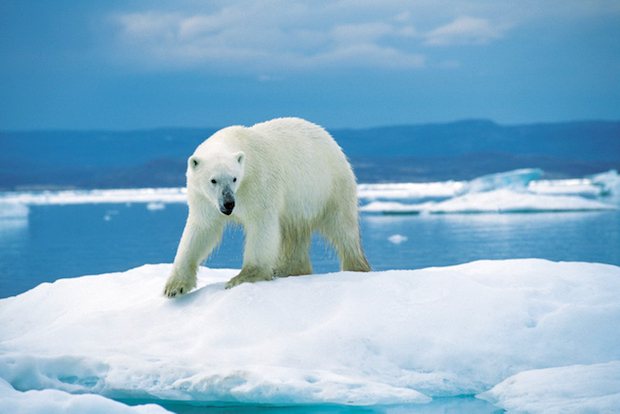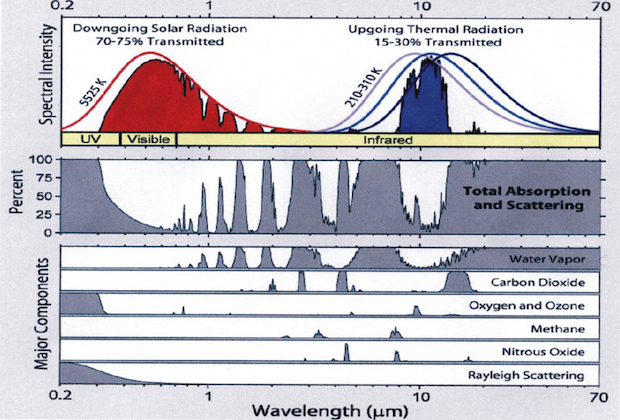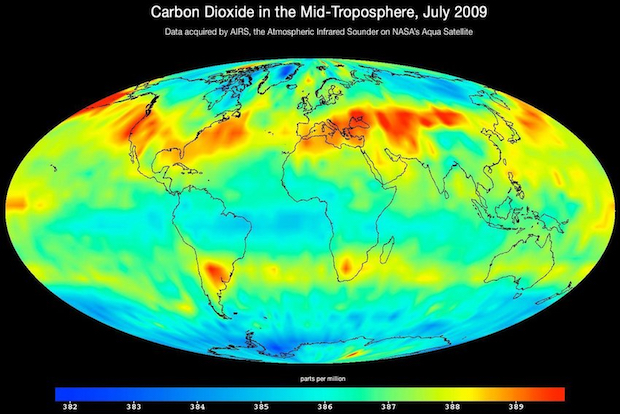
We hear the phrase “Climate Change” more and more often and in fact, its tone is becoming increasingly shrill. 16 year old ignorant girls like Greta Thunberg shout it angrily at us and even in articles of local papers visions of growing the resilience of certain communities in Northland are seen in its light. Mostly, if not almost exclusively, however, the term is applied without further reflection, more or less politically correctly or worse, to get the necessary attention even on little-related topics like for instance the new and – facing climate change according to the well known narrative – rather counterproductive refuse dump in Russell, from where household waste is now transported by truck to Whangarei – certainly emitting a lot of abominable carbon dioxide. So perhaps it is appropriate to look at it from the otherwise neglected side. What’s really going on about climate change?
Let’s start with some undeniable facts:
Yes, our planet is experiencing climate change. This has always been the case nearly from its birth about 4,5 billion years ago. But its atmosphere changed a lot over time. See Notes: (1) & (2)
3.5 billion years ago Earth had cooled enough so that most of the water vapor in the atmosphere had condensed as water, and Earth had its first days without clouds. Ammonia and methane were only minor constituents but carbon dioxide (CO₂) comprised about 15% of the atmosphere. 251 million years ago oxygen levels dropped from 30% to 12%, and CO₂ levels reached about 20% ! At that time Earth’s worst mass extinction happened, and it eliminated 90% of ocean dwellers and 70% of land animals. The cause of this mass extinction is thought to have been a series of volcanic events in Siberia that lasted for about one million years and released large volumes of CO₂ and other gases. For about 75% of the last 550 million years, the CO₂ content of the atmosphere has been 2 to 15 times higher than it is now. Evolution flourished, CO₂ enabled plants to photosynthesize, which is the basis of all life.
Remember: Today there is just 0,04% of CO₂ in the atmosphere. Of these, 96% are of natural origin (volcanic and release from the oceans, our creates CO₂ storage) and only 4% are of human origin.
That would be 4% of 0.04%, equal to 0.0016% of CO₂ worldwide…created by humans. Well, the New Zealand share of that was in 2016 just 0.09% which again equals 0.00000144% of industry produced CO₂. I leave it to you to decide whether this laughable low amount could play any role in the alleged attempt to save the world’s climate, especially compared with countries like China with emissions in 2016 of 314 times more but still next to nothing compared to the amounts which are continuously released by volcanic eruptions and warming oceans. But would then we humans be able to change or even “save” the world’s climate? Especially by mainly focussing on CO₂ emissions?
No, we are not in a position to do that.
Why not?
Well, looking at all the gases in the atmosphere (76% Nitrogen and 20.5% Oxygen) shows the so called “greenhouse gases” (see below) are only 4%. The most prominent “greenhouse gas” however is water vapour at 95% of them all.
Does that mean that CO₂ is perhaps not a “greenhouse gas” at all?
Yes, that’s what it actually means, because “building” a greenhouse with the help of CO₂ was like trying to close an open window with two or three thin “strings” stretched over it.
This is because CO₂ absorbs only three narrow areas of the Earth’s entire outgoing heat spectrum:

2. The second heat absorption range of CO₂ at about 13 to 20 µm is also largely superimposed by the absorption spectrum of water vapor.
3. The only “string” that is hardly superimposed by water vapor is at about 4 µm and it is very, very thin, i.e. not even 1 µm!
The voodoo art of the »climate researchers« now lies in the assertion that the “strings” of all »greenhouse gases« together could close the »heat window« of the earth to such an extent that the heat accumulates. But unfortunately you can’t close such an imaginary world window with strings, especially not if they are extremely flimsy. While the atmosphere still contains this tiny amount of CO₂, the question remains: How is this minimal amount supposed to stop the earth’s enormous heat radiation?
Well, it can’t.
So the only really effective “greenhouse gas” is water vapor. This is precisely why it is warmer in winter under a cloud cover than under the »open sky« – namely because the clouds stop and store the heat like a warm blanket. Water is the most important heat reservoir on earth. Only when the clouds disappear it can get freezing cold.
We can not change the world’s climate. Not only because, as shown, we are by far the smallest factor in the natural process of a continuous change in atmospheric composition, but above all because CO₂ does not play the role we assign to it.
Today we’ll see that the claim CO₂ was responsible for climate change is actually as true as the doctrine 400 years ago that witches make bad weather.
One of the least challenged claims of mainstream global warming “science” is that CO₂ in the atmosphere was a “well-mixed gas.” A new scientific analysis See Notes: (3)

Acceptance of the “well-mixed gas” concept is a key requirement for those who choose to believe in the above explained so-called “greenhouse gas” effect. A rising group of skeptic scientists have however put the “well-mixed gas” hypothesis under the microscope and shown that it contradicts not only satellite data but also measurements obtained in standard laboratory experiment. See Notes: (3)
Canadian climate scientist, Dr Tim Ball is prominent among the group of skeptics and has been forthright in denouncing the IPCC (Intergovernmental Panel on Climate Change) claims: “I think a major false assumption is that CO₂ is evenly distributed regardless of its function.“
Dr Ball believes that this latest issue is probably one of the easiest for non-scientists to comprehend. Indeed, even high school children are taught the basic fact that gravity causes objects heavier than air to fall to the ground. And that is precisely what CO₂ does – this minuscule trace gas is heavy and is soon down and out as can be shown by simple experiments See Notes: (4)
Moreover there is also the frequently used CO₂ fire extinguisher where the heavy gas is used to displace oxygen. Or, we can look at it another way to make these technical Physics relationships easy. This is because scientists refer to ratios based on common standards. Rather than refer to unit volumes and masses, scientists use the concept of Specific Gravity (SG). Giving standard air a value of 1.0 then the measured SG of CO₂ is 1.5 (considerably heavier).
The same principle is applied to heat transfer, the Specific Heat (SH) of air is 1.0 and the SH of CO₂ is 0.8 (heats and cools faster than other parts of air). Heavy CO₂ warms faster and rises as in a hot air balloon. It then rapidly cools and falls.
This ‘thermal’ turbulence is aided by wind flow patterns, but the ratios of gases in the atmosphere are never static or uniform anywhere on Earth. Without these properties CO₂ would fill every low area to dangerously high levels. Not ‘high’ in a toxic sense, only that CO₂ would displace enough Oxygen that you could not have proper respiration. Nitrogen is 78% of the atmosphere and totally non-toxic, but if you continued to increase Nitrogen and reduce Oxygen the mixture would also become ‘unbreathable.’
It is only if we buy into the IPCC’s “well mixed gas” fallacy that climate extremists can then proceed to dupe us further with their claim; that this so-called “well mixed” CO₂ then acts as a “blanket” to “trap” (but we have seen above that it can’t) the heat our planet receives from the sun. See Notes: (X)
Believe it or not, humanity is not entitled to a certain “world temperature” or to a certain climate. The Earth is not a heater and does not have a thermostat that you could just set to 15 degrees C which is the official ideal world temperature (by the way: at this stage the average world temperature is at 14.8 ° C, so still below and not above, i.e. still “recovering” from the last ice age).
Rather, the earth is like a living organism whose temperature has always fluctuated. Actually logical, isn’t it?
But not for our “man-made climate change believers”. They insist that “climate change” must be deadly. They resemble small children who, when it gets dark in the evening, immediately believe in the end of the world – even though the sun rises again the next morning. After all, our ancestors were able to live quite well in a warm Central and Northern Europe. See Notes: (5)
It is not for nothing that wine was already cultivated in England in Roman times and in the Middle Ages. And Greenland also takes its name not because of the beautiful glaciers, but because of its green meadows where the Vikings kept herds of cattle. That is why people also spoke of the “medieval climate optimum”, which in the meantime, however, has been renamed “medieval warm period” because otherwise it might sound too favourable…? See Notes: (4) & (5)
Even the deceased could still be buried in Greenland in the earth, where today the alleged “permafrost” would make any burial impossible. Admittedly, there were also malaria pathogens and one or the other plague of locusts in Europe. This was not “unnatural” since the Earth’s temperature has always fluctuated. And this is also quite easy to understand, because after all, in a room where it is getting warmer and warmer, you should not only stare at the windows (i.e. the atmosphere), but also at the huge stove:
Could it not be that this huge stove is responsible for the temperature fluctuations? So in this case the Sun?
Indeed it is. “Over the last 100 years, solar activity has shown a clear upward trend that corresponds very well with global warming (on land and at sea), with ocean temperature showing a slightly stronger correlation to solar activity than land temperature. All this makes it clear that solar activity is an important driving force for global warming…«, two renowned Chinese researchers wrote in their study »Periodicities of solar activity and the surface temperature variation of the Earth and their correlations« See Notes: (6), and this also explains the slight increase in CO₂ in the atmosphere that has been observed for some time: The sun warms the oceans and these release more CO₂.
How shaky on the other hand the IPCC assumptions are, showed also the Covid lockdowns. This unique large-scale experiment anticipated the “exit” from CO₂, so to speak: less air traffic, far less shipping (no cruise ships!), less driving and fewer human activities are hardly possible. Nevertheless, the resulting reduction in CO₂ emissions had no influence on the CO₂ content in the atmosphere, as recently reported by the World Meteorological Organization WMO See Notes: (7)
That doesn’t come to me as a great surprise. See Notes: (6) and (7)
Notes:
(1) How has the composition of the earth’s atmosphere changed over time?
(2) What was our atmosphere like when the Earth was young?
(3) It’s water vapor, not CO2 that causes global warming.
(4) CO2 is heavier than air demonstration video
(5) Reading University Debating Journal: Piers Corbyn challenge of Man-Made Climate Change
(6) Periodicities of solar activity and the surface temperature variation of the Earth
(7) Carbon Dioxide Levels Continue, despite COVID-19 Lockdown
or CO2 Levels Continue to Increase despite COVID-19 Lockdowns
 PacificRimTackle
PacificRimTackle
